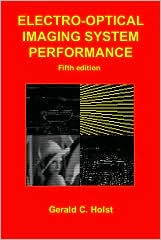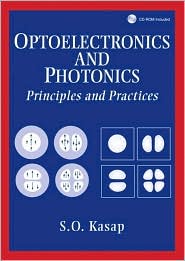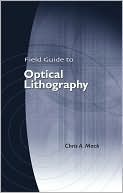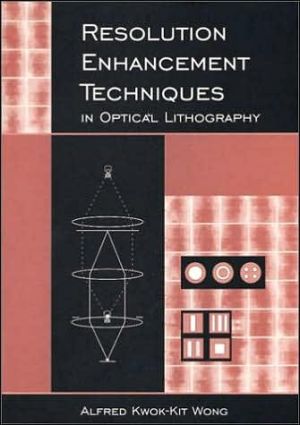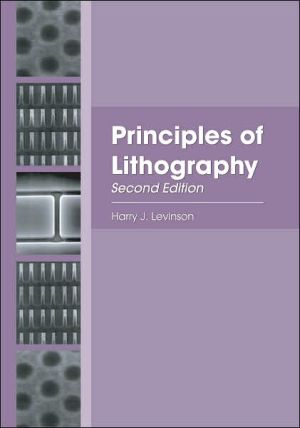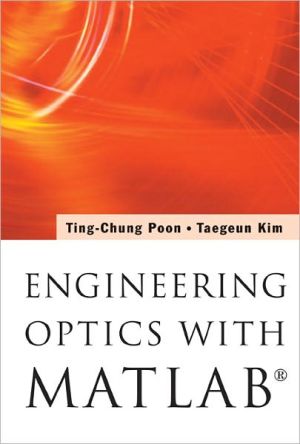Chalcogenide Glasses for Infrared Optics
Search in google:
Cutting-edge techniques for yielding high-quality chalcogenide glassesThis pioneering work describes the technology, developed over a 50-year period, to utilize chalcogenide glasses as infrared optical materials. Methods for qualitatively identifying chalcogenide glass compositions and producing high-purity homogeneous glass are discussed.Chalcogenide Glasses for Infrared Optics includes unique production techniques developed through the author's work at both Texas Instruments (TI) and Amorphous Materials, Inc. (AMI). The production of vacuum float zoned silicon, gallium arsenide, and cadmium telluride, all useful in infrared technology, is explained. The book highlights examples of how glass composition can be changed to enhance a particular property.Coverage includes: Transmission of light by solids Physical properties of chalcogenide glasses Glass production Careful characterization of glass properties Conventional lens fabrication—spherical surfaces Molding of unconventional aspheric lenses with diffractive surfaces Glass processes for other applications IR imaging bundles made from chalcogenide glass fibers Production of infrared crystalline materials at AMI Development of an automatic ellipsometer system at TI
Acknowledgments xiIntroduction xv1 Transmission of Light by Solids 11.1 Solids 11.2 Beginning of Transmission of Light-An Electronic Transiton 21.3 Long-Wavelength Cutoff 51.4 Extrinsic Loss within the Band, Impurities, Scatter, and Quality 101.5 Optical Constants and Dispersion due to Strong Absorption 12References 142 Chalcogenide Glasses 172.1 Historical Development 172.2 The Periodic Table and Glass Formation 212.3 Evaluating Possible Glass Forming Systems 292.4 Qualitative Evaluation of Compositions for Development 352.5 General Physical Properties of Chalcogenide Glasses 402.5.1 Softening Points and Hardness 402.5.2 Thermal Coefficients of Expansion 412.5.3 Density 412.5.4 Molar Refraction 422.5.5 Electrical Properties 472.5.6 Physical Strength 472.5.7 Softening Points 482.6 Chemical Bonding in Chalcogenide Glasses 482.6.1 Composition Location in the Glass Forming Diagram 482.6.2 Molecular Vibrations of Constituent Atoms 502.6.3 Mass Spectrometric Investigation of Bonding in the Glasses 552.6.4 X-ray Radial Distribution Analysis of Chalcogenide Glasses 572.6.5 Conclusions from the TI Exploratory Programs of 1962 to 1965 592.7 Chalcogenide Glasses Containing Transition Elements 602.8 Discussion of Results 66References 693 Glass Production 713.1 Reactants 713.2 Compounding Methods 733.3 Compounding with Reactant Purification 743.4 Open Casting Methods 773.5 Purification, Compounding, Casting-One Closed Operation 843.6 Summary 86References 874 Characterization of Glass Properties 894.1 Thermal Expansion, Glass Transition Temperature, and Softening Point 894.2 Transmission, Precise Refractive Index, and Thermal Change in Refractive Index 944.3 Physical Properties Important for Optical Use 1084.3.1 Hardness 1084.3.2 Young's Modulus, Shear Modulus, and Poisson's Ratio 1094.3.3 Rupture Modulus 1104.3.4 Thermal Conductivity 1124.3.5 Electrical Resistance 1134.4 Resistance to Chemical Attack 1144.5 Final Production Procedure 114References 1185 Conventional Lens Fabrication and Spherical Surfaces 1195.1 Lens Blank Preparation 1195.2 Generation of Spherical Surfaces 1215.3 Polishing 1225.4 Testing 1235.5 Antireflection Coatings 126Reference 1296 Unconventional Lens Fabrication, Aspheric Surfaces, and Kinos 1316.1 Optical Designs 1316.2 Diamond Turning 1326.3 Slump Molding 1336.4 Precision Molding 1336.5 Volume Production 1466.6 Problem of Refractive Index Change When Pressure Molding 148References 1517 Glass Processes for Other Applications 1537.1 AMI as Supplier of Chalcogenide Glasses for IR Fibers 1537.2 AMI Fiber Drawing Process 1587.3 Chemical Applications of AMI IR Fiber 1687.3.1 Fiber Summary 1737.4 Extrusion of Chalcogenide Glasses 1747.4.1 Glass Extrusion Summary 178References 1788 IR Imaging Bundles Made from Chalcogenide Glass Fibers 1818.1 The Stacked Ribbon Method 1818.2 IR Imaging Bundles of 1-m Length 1848.3 Goals of the Navy SBIR 10-mIR Imaging Bundle Program 1918.4 The Navy Phase II 27-Month Program 1928.4.1 The 1-m C2 Imaging Bundles 1928.4.2 AMI Glass Clad Fibers 1948.4.3 AMI Production of High-Purity Arsenic Trisulfide Glass 1948.4.4 The 50 Percent Transmission Goal 1968.4.5 Formation of Bundles on the 10-m Drum 1998.4.6 Optical Evaluation of 10-m Imaging Bundles 2048.5 Summary 209References 2109 AMI Infrared Crystalline Materials 2119.1 Cadmium Telluride 2119.2 Previous Work at TI 2129.2.1 Conclusions Concerning This Effort 2149.3 AMI DARPA-Funded Large Plate Process 2159.3.1 Conclusions 2219.4 Vacuum Float Zoned Silicon Detector Material 2229.5 Silicon as an Infrared Optical Material 2259.6 Single-Crystal Silicon Fibers 2289.7 Gallium Arsenide as an Infrared Optical Material 2309.8 Production of GaAs at AMI 2319.9 Horizontal Bridgman Production of GaAs Plates at AMI 233References 24310 Early Work at Texas Instruments 24510.1 First Job 24510.2 Infrared Applications to Materials 24510.3 Optical Interference and Film Thickness 24710.4 The Infrared Scan Technique for Epitaxial Film Thickness 24810.5 Elliptical Polarization of Light on Reflection 25210.6 Measuring the Elliptical Polarization Angles Ψ and Δ 25510.7 Ellipsometers Used at TI 25910.8 Infrared Ellipsometry 25910.9 The TI Automatic Ellipsometer System 26410.10 Summary 269References 270Index 271


